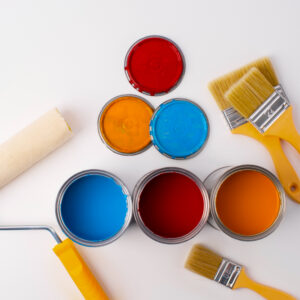Taking care of your lawn seems like a simple activity. After all, millions of people mow and feed and remove weeds from their lawns every day.
Yet you might be surprised to learn that lawn care, in particularly mowing, is actually a fairly dangerous activity. In fact, the Consumer Product Safety Commission notes that each year, nearly 200,000 people visit the emergency room for lawn care related injuries. From cuts and bruises to poisonings and worse, taking care of your lawn isn’t something to do without taking the correct precautions.
To stay safe, and reduce the chance of injury, follow these tips before the next time you take out the lawn mower.
Clean Up Before Mowing
Lawn mower blades spin fast, and can easily send debris, including sticks, rocks, and pieces of plastic, shooting out from underneath at speeds topping 100 miles an hour. Consider this: A single small rock flying out from under a lawn mower can move fast enough to puncture the structure of an above-ground swimming pool. If it can pierce metal, imagine what it will do to you? Before moving, walk around the yard to pick up any debris that could become a dangerous projectile, hurting you, bystanders, or property.
Wear Proper Gear
It might be warm outside but mowing the lawn in shorts and flip-flops – or no shoes at all – is dangerous. To protect yourself against flying debris and other dangers, wear long pants and closed-toe shoes while mowing. For extra protection, a pair of safety goggles is a good idea to keep dust, pieces of grass, and other debris from flying into your eyes.
Keep Children Away
Once they reach a certain age, it’s unlikely your kids will be intrigued by the lawn mower (and may actively avoid) it, but until that day comes, keep kids and other spectators away from the mower while you are working. Again, flying debris is a concern, but people have also been known to be run over or hit by lawn mowers, especially riding lawn mowers. Don’t let your young children ride on the mower with you or use push mowers until they are teenagers and have been taught the proper use of the machine. Children have been seriously injured or killed in lawn mower accidents, so it’s best to just keep them away.
Keep Your Fingers Away
It might seem like common sense, but thousands of people are injured, some of them seriously, by touching the blades of the mower while they are in motion. Never, ever try to touch the blades for any reason until the machine is off and stopped completely. All lawn mowers made within the last 40 years are equipped to automatically stop the blades within three seconds; you can wait that long to clear the debris or fix what needs to be fixed. Even if the machine is off, if the blades stopped suddenly because something became jammed, clearing the jam can cause them to start turning again due to the energy that remained in the springs. Use extreme caution when clearing jams to prevent injury. Finally, if your lawn mower blades need sharpening, bring your mower to a professional, who can complete the job safely.
Be Cautious with Chemicals
Lawn mowers aren’t the only source of danger when it comes to lawn care. Fertilizers and pesticides can also be dangerous if they aren’t stored or used properly. Children can accidentally ingest lawn chemicals, and even just touching or breathing in the chemicals can make them very sick. If you keep lawn chemicals on hand, be sure they are stored safely and out of reach of children. An even safer option is to hire a lawn service to manage pest control and feeding your lawn. Just search “lawn maintenance near me” to find a qualified lawn care company that can keep your grass healthy without endangering your family.
Safely caring for your lawn simply requires a bit of foresight and a lot of common sense. Preventing flying debris as much as possible, using the right gear, storing items properly, and keeping your hands away from spinning blades will ensure that your lawn looks great all summer – without any trips to the emergency room.






